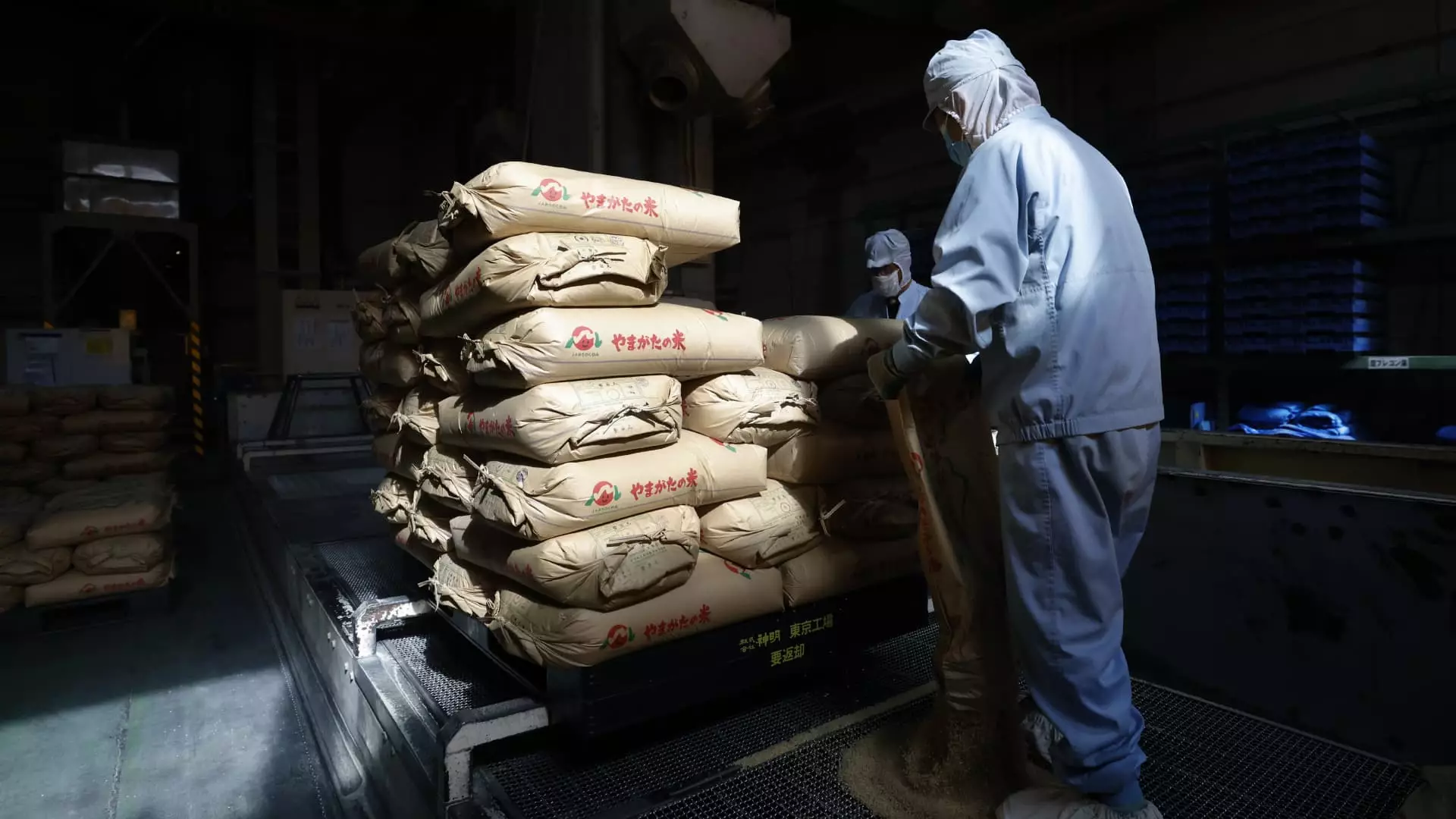In recent months, Japan has witnessed a shocking spike in rice prices, with the cost more than doubling—an unfathomable increase of 101.7% year-over-year as of May. This is not merely a blip on the radar; it is the most significant jump in rice prices recorded in over fifty years. Following a staggering 98.4% rise in April and a 92.1% increase in March, the trend paints a grim picture for a nation whose food security is intimately tied to this staple grain. The government has scrambled to mitigate the repercussions of this inflation by tapping into emergency rice stockpiles, but one has to wonder: is this merely a band-aid solution for a wound that may soon become a gaping fissure in Japan’s economy?
Inflation: A Deceptive Metric
Inflation rates never lie, or so we have been led to believe. As Japan’s core inflation reached 3.7% in May—the highest since January 2023—economists had anticipated a mere 3.6%. However, amidst the numbers lies the uncomfortable truth that Japan is grappling with persistent inflation that has now exceeded the Bank of Japan’s (BOJ) 2% target threshold for 38 consecutive months. While headline inflation saw a marginal decline from 3.6% to 3.5%, the core-core inflation, which excludes both fresh food and energy prices, escalated to 3.3%. This raises alarm bells about the sustainability of Japan’s economic ecosystem: a seemingly resilient structure built on increasingly fragile feeding.
The Impact of Rising Food Prices on Households
Marcella Chow, a Global Market Strategist at JP Morgan Asset Management, made an insightful connection: rice constitutes nearly 50% of Japan’s core inflation metrics. The implications are clear—if food prices remain unstable, so too will inflation. The potential for further economic turmoil is pronounced, as increased rice prices inevitably trickle down into the cost of processed foods and dining out. Government attempts to alleviate some of this burden could aid household spending, but their effectiveness hinges on how far-reaching these cuts will be. The rising cost of living could suppress consumer optimism, leading to decreased real economic activity—a paradox that ultimately feeds into the cycle of inflation.
A Concerning Forecast for Economic Growth
As if the situation weren’t dire enough, Japan’s GDP has also taken a downturn, shrinking by 0.2% in the first quarter of the year. Exports have faltered, marking the first quarterly contraction in a year and shedding light on the fragility of Japan’s economic footing. The BOJ remains cautiously optimistic, suggesting that inflationary pressures may ease in the coming months. But can we trust these forecasts? As geopolitical tensions mount—particularly in the Middle East affecting energy prices—the prospect of an easier economic landscape feels uncertain.
The BOJ’s Dilemma: Balancing Act or Tightrope Walk?
With the central bank maintaining interest rates at 0.5%, the BOJ faces an impossible dilemma: how to navigate the intricate landscape of wage increases and selling prices without stifling recovery. Governor Kazuo Ueda has summarized the duality of their strategy: “We will continue to raise rates once we have more conviction that underlying inflation will approach 2%.” The cautious optimism may be tempered by reality, as sluggish CPI inflation looms large against the delicate backdrop of a decelerating economy.
The psychological implications of continuous price increases—for a nation that prides itself on stability—could exacerbate consumer panic and lead to decreased spending and lower confidence. This feedback loop does not merely endanger private consumption but poses an existential threat to Japan’s long-term economic health.
This turmoil strikes at the heart of what it means to be Japanese. Rice is not simply food; it represents a cultural and historical artifact. The profound implications of soaring prices extend beyond the grocery aisles into our very identities as a nation. The situation demands critical attention—not just from economists, but from individuals who stand to be affected by the rapidly changing landscape of their food security. In an increasingly volatile world, Japan must heed the call for action and introspection, lest it finds itself left behind in the pursuit of stability and sustenance.


Leave a Reply